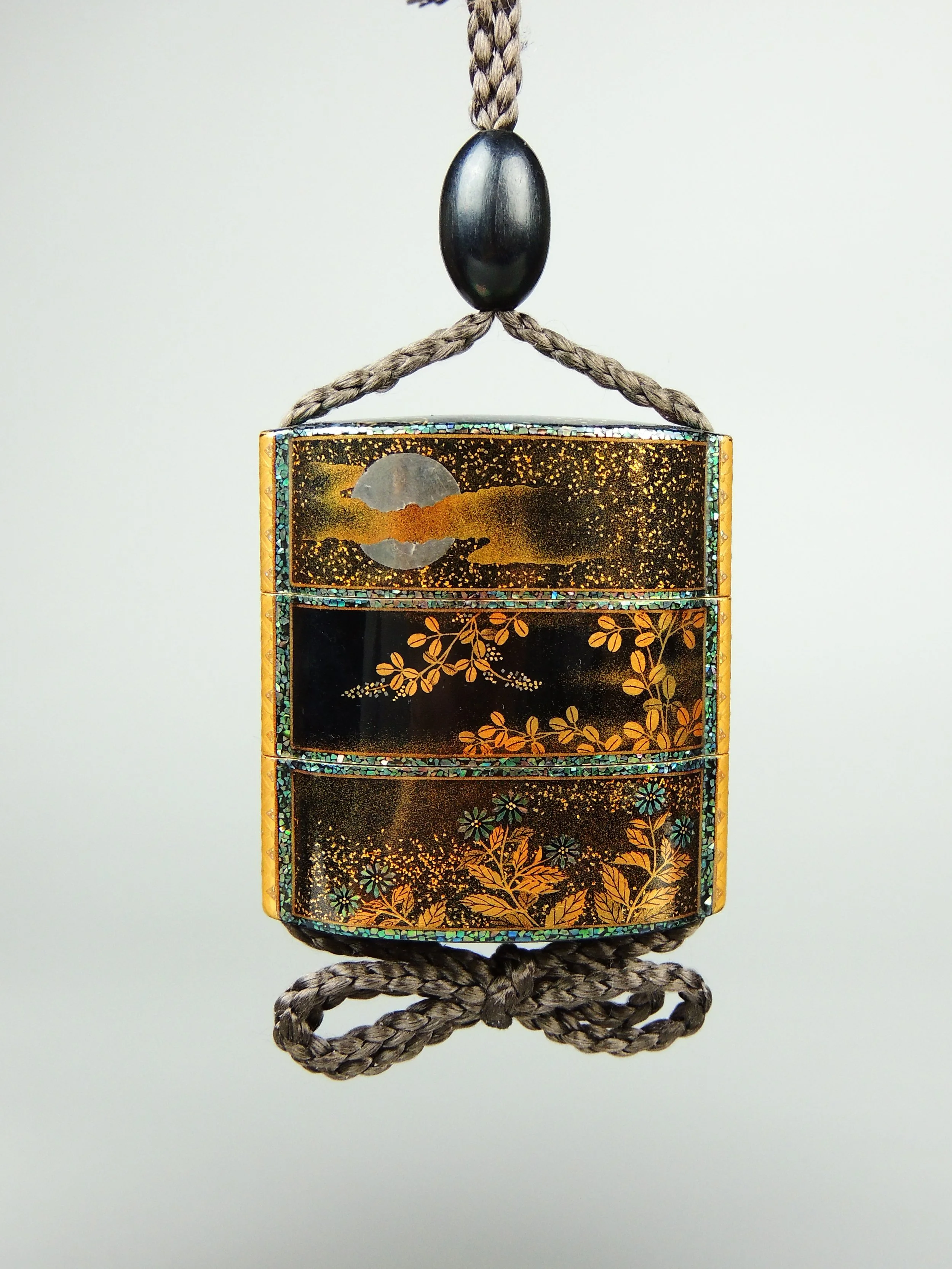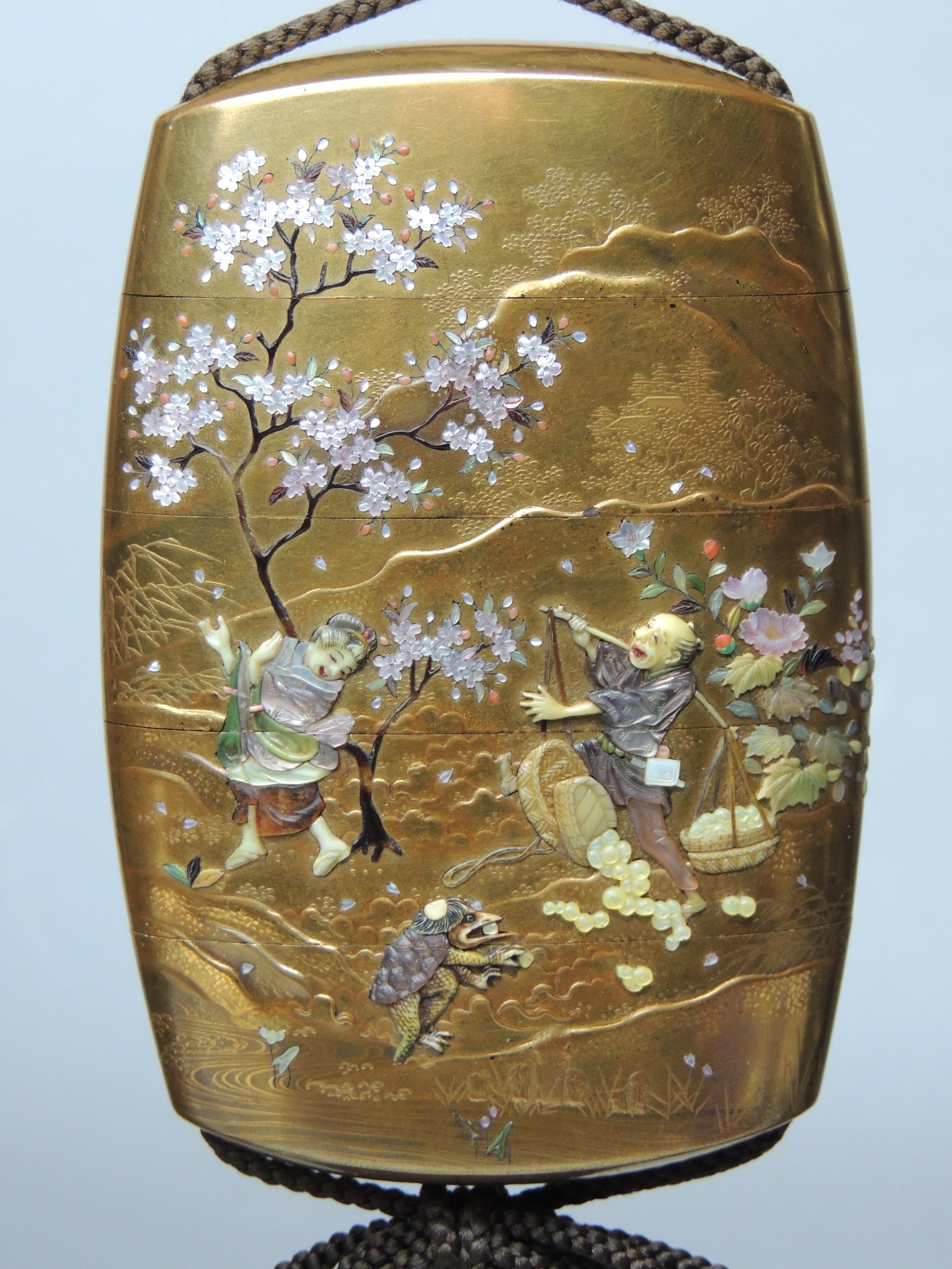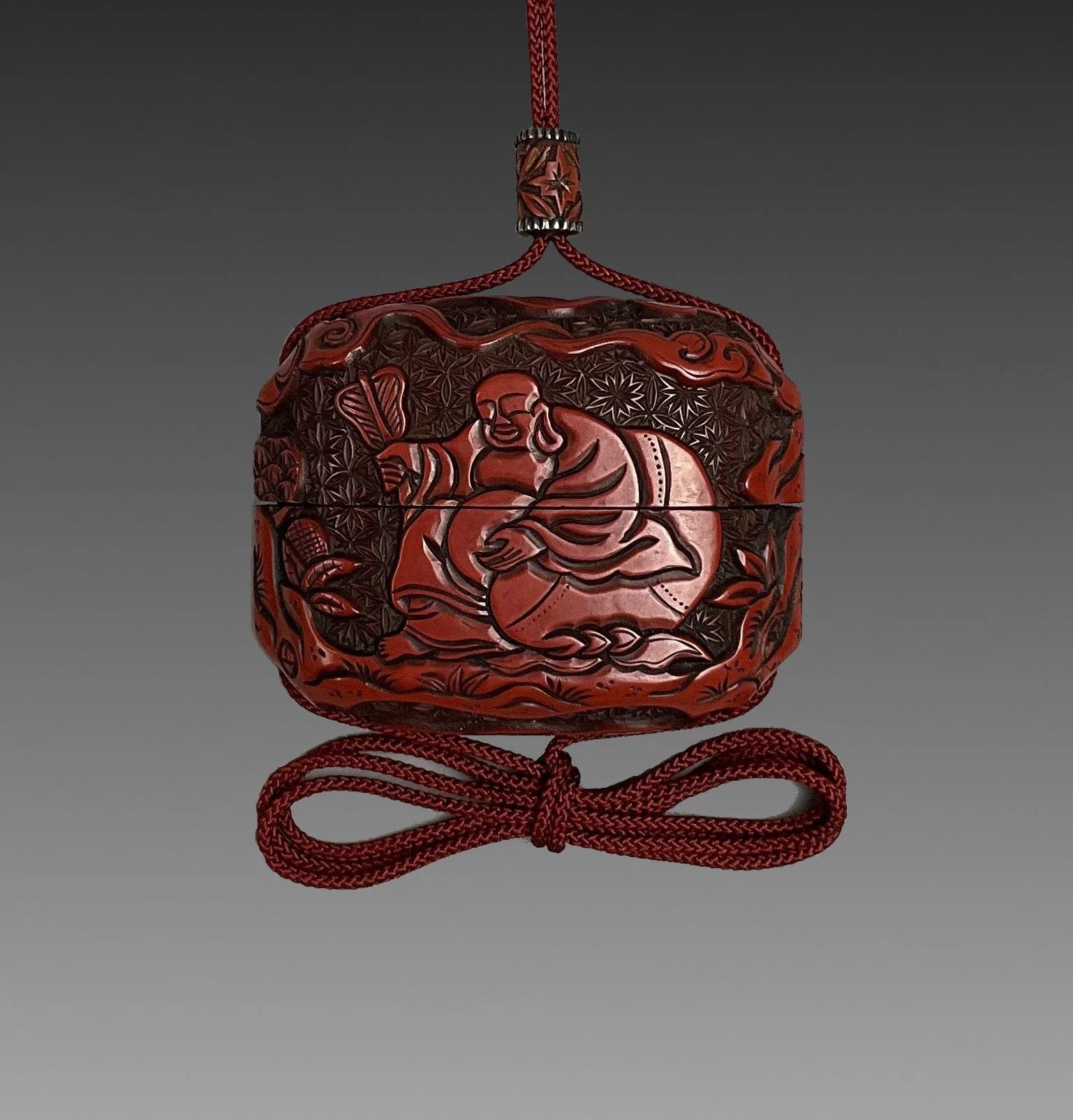Anonymous
Late Edo period, 18/19th century
1615-1868
Inro
Two-case inro beautifully made in the somada style technique. Small gold and aogai shell inlay used as borders to three picture panels. Intricately powdered flowers, spider webs and moon scenes decorate both sides of the inro in togidashi.
Fireplace, St Peter’s Hospital. Bristol Museum.
This inro came from the collection of W.B. Tapp Bristol (1905-1991). A collector of oriental objects student of the artist Reginald Edgar James Bush, Painter, draughtsman, printmaker and teacher, born in Cardiff, Wales. Bristol museum hold a print by W.B. Tapp of the Fireplace, St Peter’s Hospital.
Unsigned
57mm x 57mm
Ojime
Ebony wood olive shaped bead.








